Ting Zhao
K-space Diffusion Model Based MR Reconstruction Method for Simultaneous Multislice Imaging
Jan 06, 2025Abstract:Simultaneous Multi-Slice(SMS) is a magnetic resonance imaging (MRI) technique which excites several slices concurrently using multiband radiofrequency pulses to reduce scanning time. However, due to its variable data structure and difficulty in acquisition, it is challenging to integrate SMS data as training data into deep learning frameworks.This study proposed a novel k-space diffusion model of SMS reconstruction that does not utilize SMS data for training. Instead, it incorporates Slice GRAPPA during the sampling process to reconstruct SMS data from different acquisition modes.Our results demonstrated that this method outperforms traditional SMS reconstruction methods and can achieve higher acceleration factors without in-plane aliasing.
MR Optimized Reconstruction of Simultaneous Multi-Slice Imaging Using Diffusion Model
Aug 21, 2024Abstract:Diffusion model has been successfully applied to MRI reconstruction, including single and multi-coil acquisition of MRI data. Simultaneous multi-slice imaging (SMS), as a method for accelerating MR acquisition, can significantly reduce scanning time, but further optimization of reconstruction results is still possible. In order to optimize the reconstruction of SMS, we proposed a method to use diffusion model based on slice-GRAPPA and SPIRiT method. approach: Specifically, our method characterizes the prior distribution of SMS data by score matching and characterizes the k-space redundant prior between coils and slices based on self-consistency. With the utilization of diffusion model, we achieved better reconstruction results.The application of diffusion model can further reduce the scanning time of MRI without compromising image quality, making it more advantageous for clinical application
* Accepted as ISMRM 2024 Digital Poster 4024
DeepBranchTracer: A Generally-Applicable Approach to Curvilinear Structure Reconstruction Using Multi-Feature Learning
Feb 02, 2024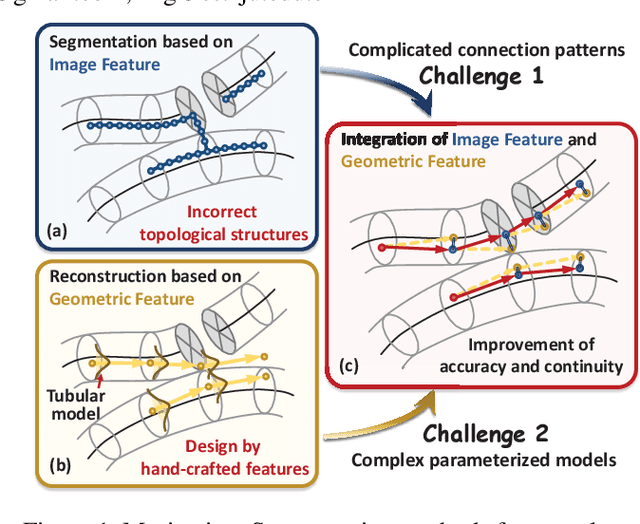

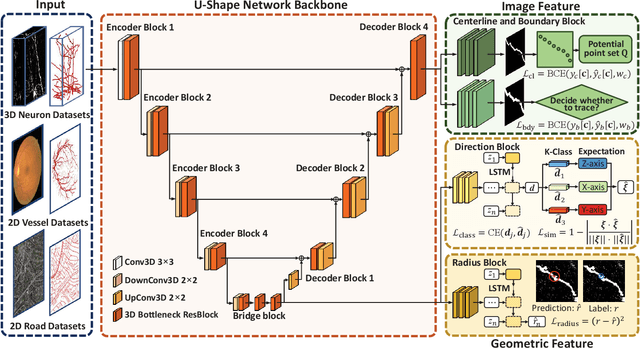
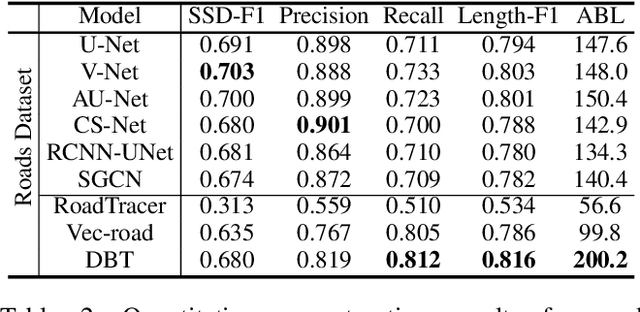
Abstract:Curvilinear structures, which include line-like continuous objects, are fundamental geometrical elements in image-based applications. Reconstructing these structures from images constitutes a pivotal research area in computer vision. However, the complex topology and ambiguous image evidence render this process a challenging task. In this paper, we introduce DeepBranchTracer, a novel method that learns both external image features and internal geometric characteristics to reconstruct curvilinear structures. Firstly, we formulate the curvilinear structures extraction as a geometric attribute estimation problem. Then, a curvilinear structure feature learning network is designed to extract essential branch attributes, including the image features of centerline and boundary, and the geometric features of direction and radius. Finally, utilizing a multi-feature fusion tracing strategy, our model iteratively traces the entire branch by integrating the extracted image and geometric features. We extensively evaluated our model on both 2D and 3D datasets, demonstrating its superior performance over existing segmentation and reconstruction methods in terms of accuracy and continuity.
Pyramid Feature Attention Network for Saliency detection
Apr 04, 2019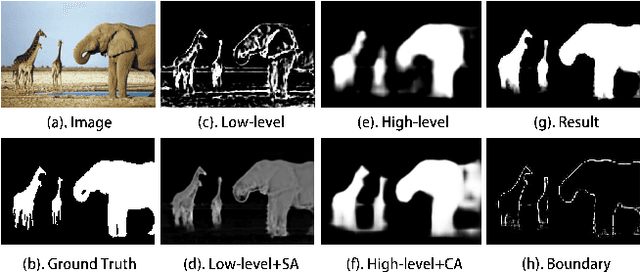
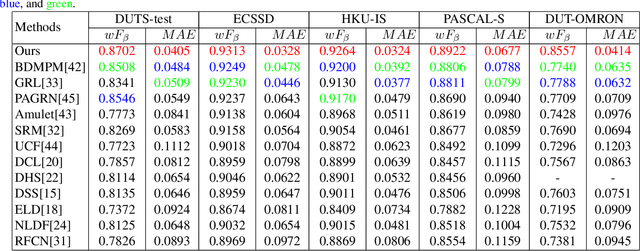
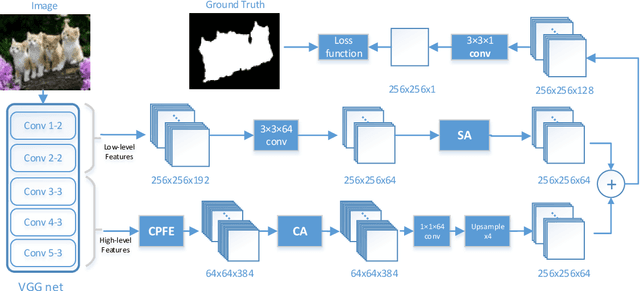

Abstract:Saliency detection is one of the basic challenges in computer vision. How to extract effective features is a critical point for saliency detection. Recent methods mainly adopt integrating multi-scale convolutional features indiscriminately. However, not all features are useful for saliency detection and some even cause interferences. To solve this problem, we propose Pyramid Feature Attention network to focus on effective high-level context features and low-level spatial structural features. First, we design Context-aware Pyramid Feature Extraction (CPFE) module for multi-scale high-level feature maps to capture rich context features. Second, we adopt channel-wise attention (CA) after CPFE feature maps and spatial attention (SA) after low-level feature maps, then fuse outputs of CA & SA together. Finally, we propose an edge preservation loss to guide network to learn more detailed information in boundary localization. Extensive evaluations on five benchmark datasets demonstrate that the proposed method outperforms the state-of-the-art approaches under different evaluation metrics.
Automatic Neuron Type Identification by Neurite Localization in the Drosophila Medulla
Sep 05, 2014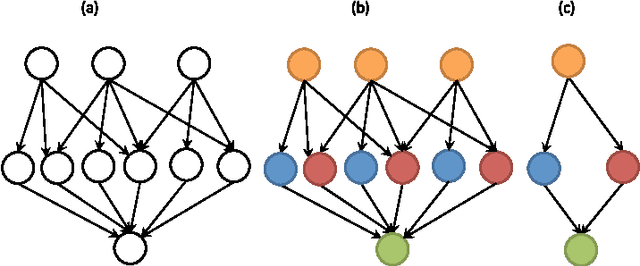
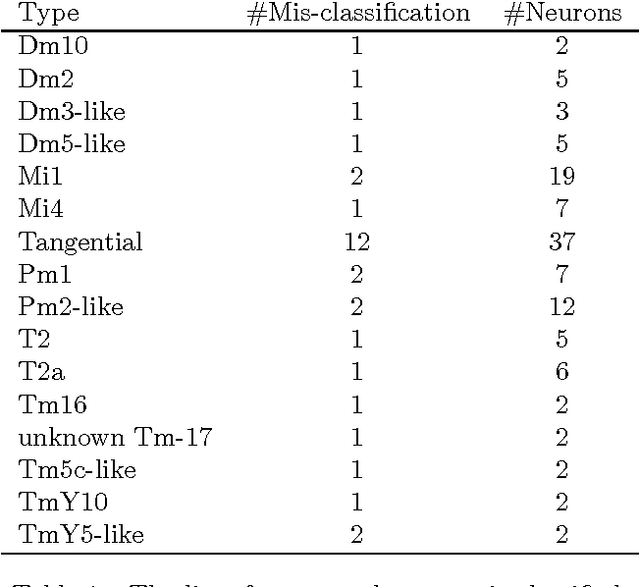
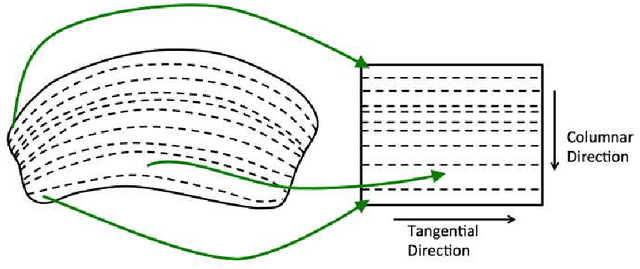
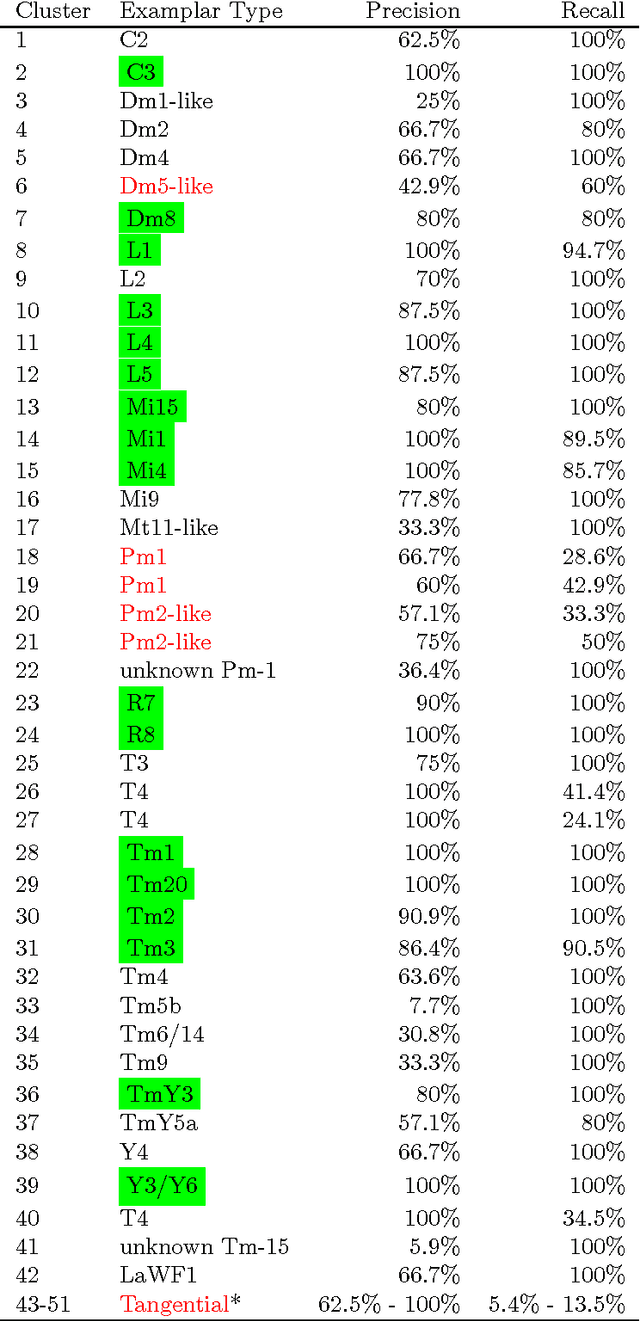
Abstract:Mapping the connectivity of neurons in the brain (i.e., connectomics) is a challenging problem due to both the number of connections in even the smallest organisms and the nanometer resolution required to resolve them. Because of this, previous connectomes contain only hundreds of neurons, such as in the C.elegans connectome. Recent technological advances will unlock the mysteries of increasingly large connectomes (or partial connectomes). However, the value of these maps is limited by our ability to reason with this data and understand any underlying motifs. To aid connectome analysis, we introduce algorithms to cluster similarly-shaped neurons, where 3D neuronal shapes are represented as skeletons. In particular, we propose a novel location-sensitive clustering algorithm. We show clustering results on neurons reconstructed from the Drosophila medulla that show high-accuracy.
 Add to Chrome
Add to Chrome Add to Firefox
Add to Firefox Add to Edge
Add to Edge